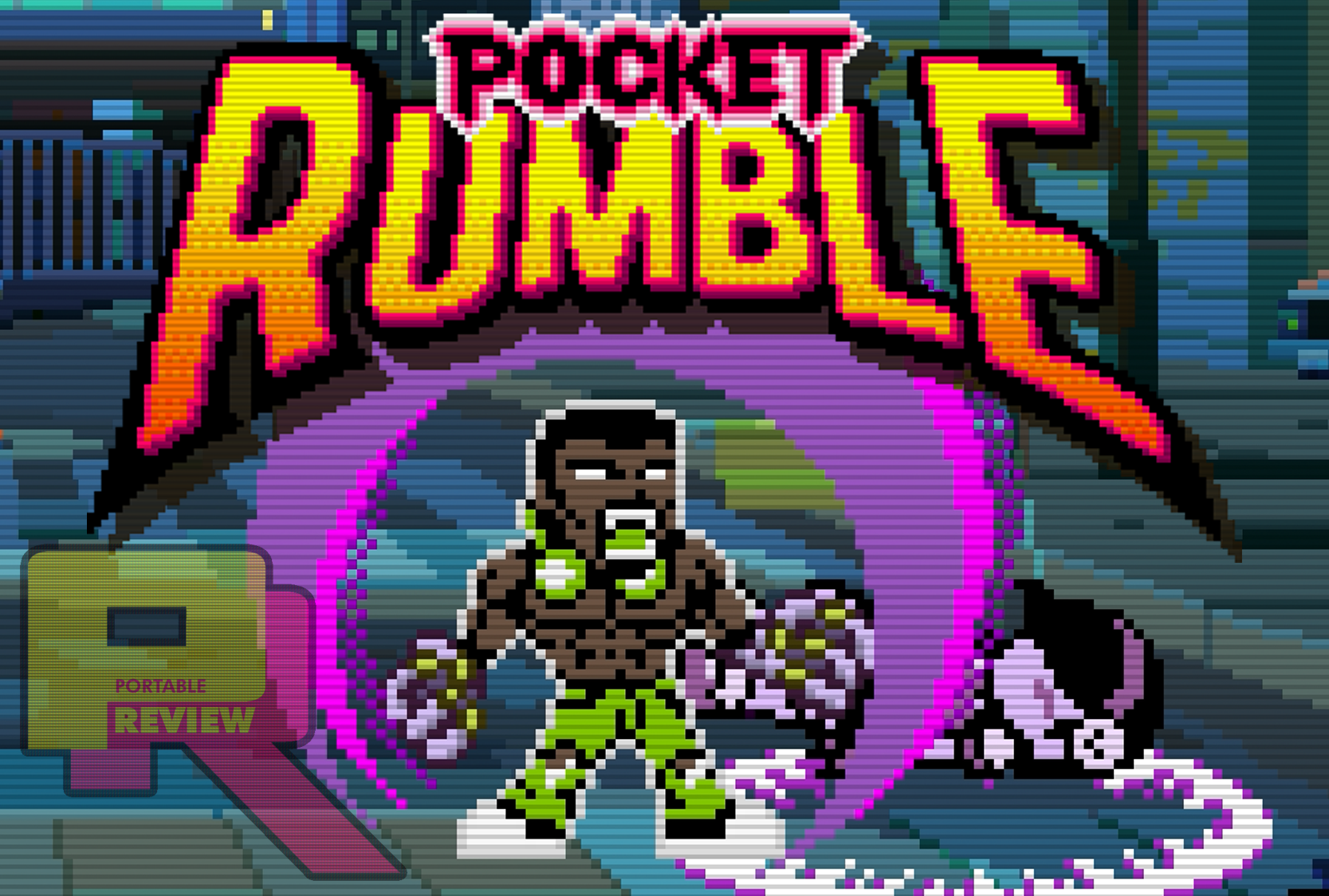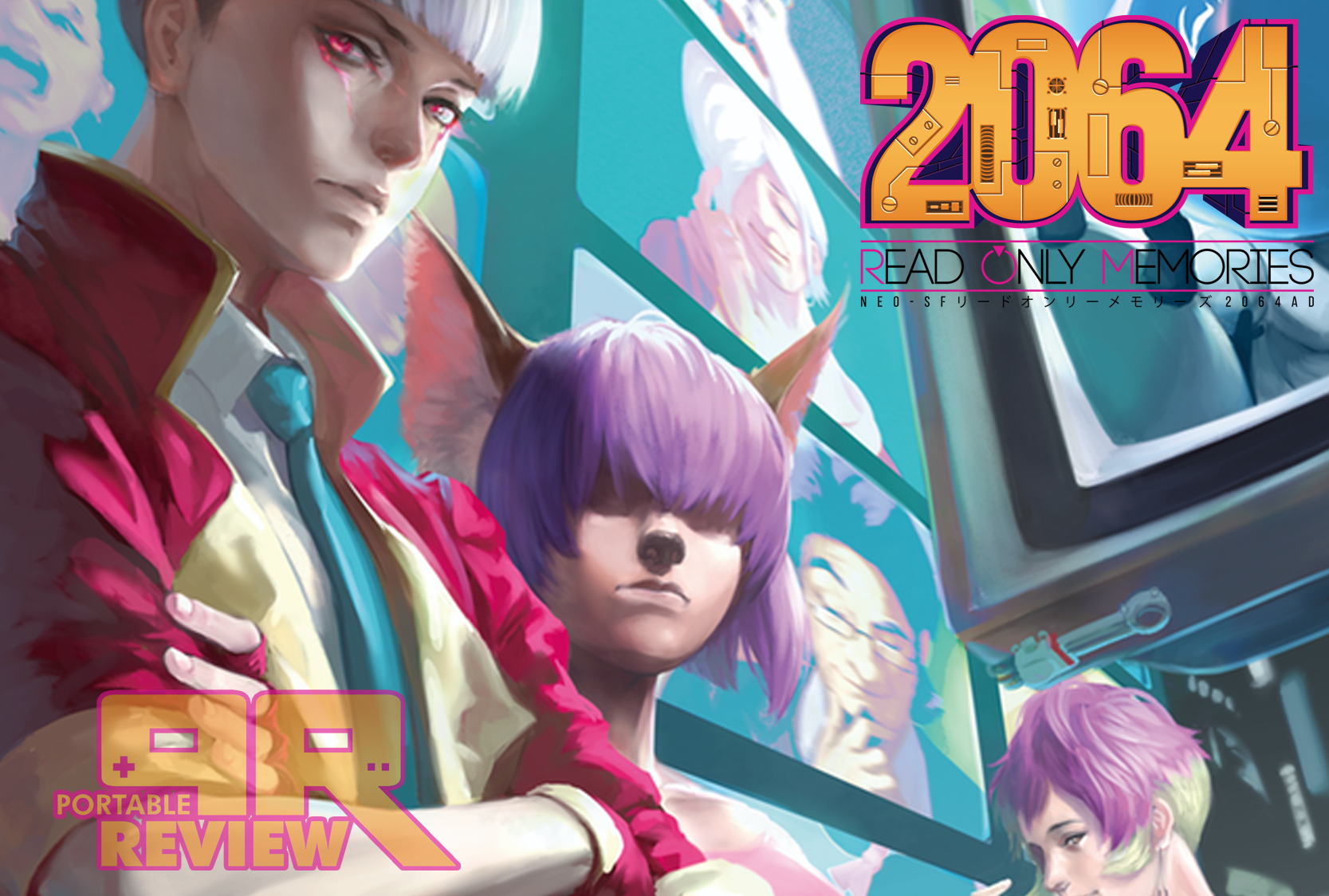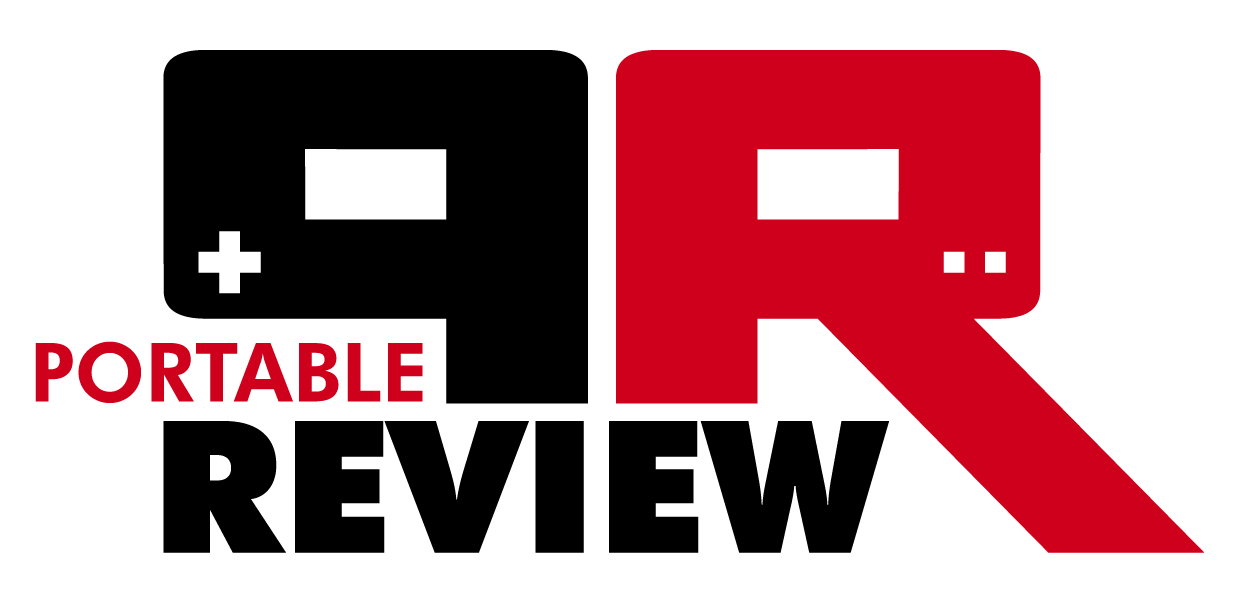
Pocket Rumble
I love fighting games. This may be lost on many of you, but I fell in love with fighters back at a local arcade called Aladdin’s Castle. Like most arcades, it was stocked full of ticket racing games, skill games, and side-scrolling beat-em-ups. Alongside all of these were a boatload of fighting games from Capcom, Midway, Namco, and SNK. Whenever we would go to J.C. Penny, I would beg my mom to let me go to the arcade. Most of the time, after I had gotten my back-to-school clothes, she would give me a few dollars to go have fun so she and her sister could grab a bite to eat or have some coffee in the food court or do some Christmas shopping. I spent almost all of my time at the arcades playing and watching people play fighting games. They were the real deal for me, and this carried over throughout my gaming life. I’m not a “pro”, but I associate with people on that level regularly, so I feel like I know what I’m talking about when it comes to fighting games.
That’s a mouthful of inconsequential information about my past. Here’s a small tidbit more about my past that might bring this review into focus. My favorite fighting game, besides the Tekken series, has been SNK VS. Capcom: Match of the Millenium (MotM) for the Neo Geo Pocket Color (NGPC). That game was so good, and I wish more people played it, but since it was on a handheld, most people dismissed it or simply never got to play it.
Pocket Rumble was made by a couple of guys who felt the same as I did about that game. From what I’ve read, the story goes that they were working on a strategy game, but spent so much time playing MotM head to head on their NGPCs instead of doing actual work. One of them said to the other, “Why don’t we make a game like this instead?”, and they started working on Pocket Rumble in their free time.
Pocket Rumble has gone through a long development time, and still is, really. A few months ago (July 5th, 2018), it was released on the Switch as a “finished” game. I say that with quotes because the game is still in early access on Steam. The developers have it at a playable, mostly balanced state, and decided to release it on the Switch as it was rumored to come out a year earlier. They’ve indicated that they will be rolling out an update for the Switch version down the line after they’ve significantly updated the PC version. I admire their commitment, but I honestly don’t know if this will ever happen, so I’m going to assume this is the final product.
From a casual point of view, this game looks bad. It’s got a very NGPC vibe about it graphically which may turn quite a few people off. For me, it pulls at certain nostalgia strings, roping me in pretty hard on graphics alone. Each sprite has only 4 colors allotted to them, and this includes special moves as well. It’s very reminiscent of classic NGPC fighters in that regard. It looks like it could have been on that system, and that’s both good and bad. For me, it’s great. For casuals looking at the game, they might prefer to glance over it for something like BlazBlue Cross Tag Battle, which is also “beginner friendly”.
“Beginner friendly, but why the quotes?”, I hear you ask? Simple. Had you picked up this game the first weekend of its release on the Nintendo Switch, you would have had a fine time playing this game online with all the beginner randoms out there. Fighting games are such a small market in the first place, and Pocket Rumble did take a very long time to release. When it finally did, it was right around the same time as BlazBlue, and now that Dragon Ball FighterZ is out on the Switch, it will be even harder to find anyone but the truly dedicated Pocket Rumble players online. You might run into a new player from time to time, but as soon as they fight the top 20 players, which is everyone out there, they turtle up and either start to rage quit or just don’t play anymore. It’s a brutal game to try and learn to play online, but there is a discord community that hosts both the PC and Switch players nicely. You can find that discord server here: https://discord.gg/0oQiZA5sVJt5KzSX
Now that I’ve scared off all the rage-quitters, I’d like to explain how this game is beginner friendly. To start off, there are only 2 buttons, but the two of them together are frequently used, so if you feel like it, you can set another button to be both together. You can also set buttons to be button taps. It’s really easy to pull off special moves when you don’t mean to for some people, and I’ll explain why next. If you’re one of those people, this might be a welcome option.
Here’s how the special moves work. Every character has the same basic special move functionality. By pressing diagonally down and toward or down and away and holding either of the attack buttons, you’ll do one of 4 special moves. Each character has their own special moves, and each has their own unique normal attacks as well. The game also has a special buffering system that, as far as I can recall, is unique to Pocket Rumble. The way you buffer pretty much anything is by just holding the input until it comes out. If you did a jumping attack and want to land into a heavy standing attack, just press and hold that button down to do it as soon as you recover from landing. Mind, if you are performing a jumping heavy attack, you’ll have to release, then press and hold that heavy attack again. You can’t just do the jumping heavy and hold it for it to come out when you land. It would be more of a double-tap and hold kind of thing. The same goes for special moves. If you want to do an instant dragon punch move as you wake up, hold the appropriate diagonal direction and the right button, and that move will come out at the very first frame it can. That was a lot to read, but I just want you to understand how it works.
Now, one of the things the developers wanted to do with Pocket Rumble was make each character feel like they had come from their own game with its own mechanics…at least when it comes to their special meters, anyway. I’ll discuss how each character works and their overall play style to help you get a feeling for what I mean.
Tenchi is like Ryu from Street Fighter. He builds meter by performing special attacks. Once he’s got the meter full (after 6 specials), he can unleash a super fireball by pressing the two attack buttons together. He’s also got a really fast back dash, and feels like a well-rounded character.
Naomi is more or less Terry Bogard. She even used to look like a female version of him in the original build on Steam. She builds meter by pressing the two attacks together, and after she’s built up at least 2 bars, she can perform powered up versions of two of her specials by pressing diagonal down and toward or away plus the two attack buttons at the same time. She also has a unique run instead of a forward dash. This run helps her achieve her rush-down style of play as she can do a short hop cross-up or you can even hold diagonal down and toward and keep running to do a surprise low strike into a combo. Her combos are devastating!
Hector is an iaijutsu cowboy who has extremely strong combo potential, but at a cost. Every time you perform one of his specials, he loses a point of health and gains a bar of meter, up to 4. At any point, you can press the two attack buttons together to regain health equal to however many bars of meter you have stored. You have to be careful because using your specials drains your health, and you can be easily hit out of the health regain move. His dash, both back and forward, also deal damage and drain your health. When you’ve only got one point of health remaining, you can do as many specials as you want without losing life, but you do not build meter either.
Keiko is next on the roster, and she’s considered the best by many of the people who have a lot more experience at the game than I do. She’s what is referred to as a puppet character. She has no specials of her own, and can’t even dash, but her normal attacks cover a large area, and her cat, Q, is controlled by doing what would be her special moves. You can also move Q around by doing double taps. Instead of Keiko dashing, the cuddly demon kitty moves. Q can be controlled even while Keiko is being hit or on the ground. I would say she’s the most advanced character in the game, but that may just be my opinion. Her meter is Q’s health bar. Pressing the two attacks together makes Q explode, and in certain situations, can give you that one or two extra hits on a combo that lets you win.
Quinn is a very mobile character. His dashes cover 2/3rds of the screen and allow him to easily cross-up an opponent. He also has a wall grab like Vega, but only at the actual stage walls, extreme left or extreme right. From there, he has a lot of options. His meter is a full moon at the start of the fight, and after you use it, he transforms, briefly, into a werewolf with very fast attacks. Also, in wolf form, he can grab the walls even when not at the extreme left or right of the stage. From what I’ve heard, he’s up there with Keiko on the tier list.
Subject 11 looks like Orochi Iori from King of Fighters, but this guy’s just broken out of a lab and can’t wait to get his hands on you. Sub11 is a grappler, but not just any grappler. This guy has anti-air grapple moves, close and fast throws, and half-screen dash grabs. He’s a beast. If that’s not enough, his dash puts him into an extremely low stance that goes under projectiles and most jump-in attacks. His meter builds up by blocking attacks. After blocking 7 hits, he can activate a shield that will absorb any 1 hit, allowing him to do some pretty mean aggressive grapples through fireballs and other attacks. As with most characters, you activate the shield by pressing the two attacks together.
Parker, or Agent Parker is a cigarette smoking Agent Smith-looking character. Parker’s main game is using his electric orbs to trap and combo his opponent. He also is able to parry attacks by pressing the two attacks together. His meter isn’t a meter at all. Instead, it is the number of “misses” he has remaining for his parries. In order to parry, he needs to have at least one of these bars in his meter. On a successful parry, he gains it back. His dash attacks are rolls similar to Abel from Street Fighter 4. During these rolls, he is invulnerable to attacks, but they come at a cost. Parker doesn’t have any attacks with invulnerable frames like most of the rest of the cast do.
June is…err…was? June is some kind of specter that looks like a lolita version of Jun Kazama from Tekken. She has some Dhalsim-like normal attacks, but her specials work more like Bedman from Guilty Gear Xrd. In fact, her special invokes this even more. Every time she hits you, little fires appear to float in the air where you got hit for a second or two. She can build her meter by grabbing those flames, and once it’s full, she can make a clone of herself to do a phantom attack copying one of her attacks that she just did. The phantom will stay where she put it until she activates it by pressing the two attack buttons together.
That sums up the roster and how they differ. Aside from its chibi character design and simplified controls, what you should expect from Pocket Rumble is a legitimate fighting game akin to classics like Street Fighter 2 or King of Fighters. Every character begins the round with a life meter that consists of 12 segments. Each time you get hit, you lose a segment. Most throws take off two segments with Subject 11’s specials doing more as he doesn’t have any real combos. For the most part, combos are pretty simple, but there are some pretty amazing, and challenging, combos to pull off. Naomi can get something like 10 hits where Parker can easily get a 6-hitter off. You can’t block in the air, and just about every character has an invulnerable anti-air move they can use to beat jump-ins and wake-up pressure. Parker and Keiko are the only ones who do not, unless I’m mistaken. The game also uses a pretty simple priority stack. Heavy attacks beat light attacks (and that’s the only real difference between them as heavies don’t do more damage) while special attacks beat heavy and projectiles beat most special attacks. Invulnerable specials will still be invulnerable, but they are also very punishable upon blocking or whiffing in most cases. Most characters can do a simple jump-in combo by performing a jumping heavy attack followed by two light attacks. It’s a quick way to get some decent damage until you learn bigger and better combos.
The GGPO net code is at its best in this game. There are a few hiccups here and there, and there are a good amount of players who rage-quit, as you may have come to see in just about every fighting game these days. If you’re just starting out, however, please don’t be discouraged by constantly being tossed into the ring with the #2 Naomi or #7 Parker. As I said above, that’s just because those are the only people playing at that time, and you’re getting some good fight time in with some of the top players. Join that discord server I linked to earlier, and you’re likely to find them there. Start a dialog and maybe ask for a long set against them in casuals where you’re not constantly dropping rank. They’re not getting enough rank points from beating you to matter, so they’ll probably welcome the invite.
If you’re a casual fighting game fan who just wants to play the game to see the endings and get an idea of whatever ludicrous story they thought up, let me just stop you there. Arcade mode has no ending. It’s a disappointing, “Thanks For Playing!” message with each of the characters’ sprites. I should also mention that you should probably just skip Arcade and VS CPU modes. Play Career mode instead as the AI seems to be better there for some reason.
Training mode is a real gem here. Below the life bars, the game will list your active frames and color code them. Yellow for startup, red for active, and green for recovery. Your opponent’s side of the screen will have an orange number whenever you hit them, a blue number when they block, and a purple number whenever they are knocked down. These represent how many frames it takes for each of these actions to happen. You can also set it to see your hit boxes so you can better gauge exactly where you stand in relation to your opponent’s moves. You can also set some buttons to record and play the opponent’s moves so you can practice defending against them. This is some real advanced stuff here, and more fighting games should include this stuff. One more thing, if you notice that all those colors I mentioned above are also in a little meter under your life bar, those are persistent all the time to keep you aware. That way, if you come across someone who always seems to be able to hit you before you hit them, you can check that bar and see if they’re recovering faster than you are. If so, maybe don’t hold that buffer or instead hold an invulnerable move to beat their attack.
So after this exceedingly long review, what’s my verdict on Pocket Rumble? Personally, it’s one of my favorite fighting games. It’s not overly complex and there aren’t a lot of button presses or timed button presses to worry about learning, and I was able to get pretty high in the leader boards for a while. That doesn’t mean it’s a game for everyone, but I encourage anyone who’s even a little interested in what I’ve described here to drop the $10 this game costs and give it a try.


